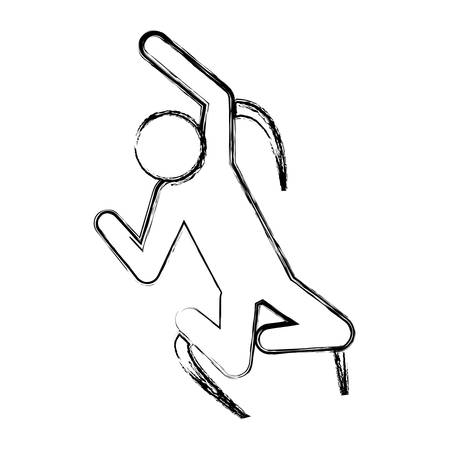Introduction to Assistive Robotics in Occupational Therapy
Assistive robotics is transforming the way occupational therapy is delivered in the United States. These advanced technologies are designed to support people with disabilities or injuries, helping them gain independence and improve their quality of life. As America’s population ages and healthcare needs become more complex, assistive robotics are becoming an essential tool for therapists and patients alike.
Overview of Assistive Robotics
Assistive robots are machines created to help people complete tasks they might otherwise struggle with due to physical, cognitive, or sensory limitations. These devices range from simple robotic arms that aid in eating or dressing to more advanced exoskeletons that help patients walk again after injury or illness. In recent years, innovations have made these robots smarter, more affordable, and easier to use.
Types of Assistive Robots Used in Occupational Therapy
| Type of Robot | Main Function | Example Use |
|---|---|---|
| Robotic Arms | Help with daily living activities | Feeding, brushing teeth |
| Exoskeletons | Support movement and mobility | Walking practice after stroke |
| Social Robots | Encourage engagement and communication | Supporting children with autism |
| Therapy Robots | Aid motor skill rehabilitation | Hand function training post-injury |
Current Roles in Occupational Therapy Practice
Occupational therapists across the U.S. are integrating assistive robotics into their practice settings, including hospitals, outpatient clinics, schools, and clients’ homes. Therapists use these tools to:
- Promote patient independence in daily activities like eating, dressing, and bathing.
- Facilitate repetitive movements necessary for neurorehabilitation.
- Create engaging and motivating therapy sessions—especially important for children and older adults.
- Collect real-time data on patient progress to personalize treatment plans.
The Relevance in American Healthcare Context
The American healthcare system faces challenges such as a growing elderly population, increasing rates of chronic disease, and a shortage of skilled rehabilitation professionals. Assistive robotics can help address these issues by:
- Enabling therapists to treat more patients efficiently.
- Reducing the physical burden on caregivers and therapists.
- Offering remote monitoring and tele-rehabilitation—key in rural or underserved areas.
- Supporting Americans’ desire for aging-in-place and independent living.
2. Opportunities for Enhancing Patient Outcomes
How Assistive Robotics Can Transform Occupational Therapy
Assistive robotics are opening new doors in occupational therapy (OT), helping patients regain independence, improve accessibility, and receive care tailored to their unique needs. In the United States, these technologies are being integrated into clinical settings more than ever, making daily tasks easier for people with different abilities.
Promoting Independence in Daily Life
Robotic devices can help patients perform everyday activities that might otherwise be difficult or impossible. For example, robotic arms can assist stroke survivors with feeding themselves or brushing their teeth. Smart wheelchairs equipped with navigation systems enable users to move around their homes or communities safely and independently. By reducing reliance on caregivers for routine tasks, patients often experience greater self-confidence and satisfaction.
Improving Accessibility at Home and Beyond
Accessibility is a major focus in American healthcare. Robotics make it possible for patients to access environments that were once out of reach. In hospitals and rehabilitation centers across the U.S., exoskeletons are helping individuals with spinal cord injuries stand and walk again. These devices not only boost mobility but also promote better health by encouraging physical activity.
Personalizing Care Through Advanced Technology
No two patients have exactly the same needs. Assistive robots can be programmed for highly personalized care plans. In some U.S. clinics, therapists use robotic gloves that track each patient’s hand movements, providing real-time feedback and adjusting exercises accordingly. This customization helps speed up recovery and keeps therapy engaging.
Examples from US Clinical Settings
| Technology | Setting | Benefit |
|---|---|---|
| Robotic Exoskeletons | Rehabilitation Hospitals | Enable standing/walking for SCI patients |
| Smart Wheelchairs | Home/Community | Increase independent mobility |
| Robotic Feeding Arms | Nursing Homes | Assist with eating tasks |
| Sensory Robots (e.g., PARO) | Pediatric Clinics | Support sensory integration therapy |
| Robotic Glove Systems | Outpatient OT Clinics | Enhance fine motor rehab post-stroke |
The future of assistive robotics in occupational therapy is bright. As technology continues to evolve, therapists and patients alike will discover even more ways these tools can support independence, enhance accessibility, and deliver personalized care across diverse clinical settings in the U.S.

3. Integration and Collaboration with Clinicians
The Importance of Teamwork in Assistive Robotics
As assistive robotics become more common in occupational therapy, collaboration between technology experts and occupational therapists is essential. American therapy practices thrive on teamwork, where clinicians, engineers, and support staff work together to deliver the best care possible. This collaborative approach helps ensure that new robotic tools are user-friendly and truly meet the needs of clients.
Workforce Training: Building Skills for Tomorrow
One major challenge in bringing robotics into therapy is training the workforce. Occupational therapists must learn not only how to operate new devices but also how to integrate them into daily practice. In the United States, this often means continuing education, workshops, and hands-on sessions provided by employers or professional organizations.
| Training Method | Description | Common Providers |
|---|---|---|
| Workshops & Seminars | Short-term intensive learning on specific devices or techniques | Hospitals, universities, device manufacturers |
| Online Courses | Self-paced learning modules available remotely | AOTA, private companies, universities |
| On-the-Job Training | Hands-on experience guided by experienced colleagues or trainers | Rehabilitation centers, clinics, hospitals |
| Certification Programs | Formal programs that verify competency in using assistive technology | AOTA, state licensing boards |
Practical Implementation: What Does It Look Like?
The practical use of assistive robotics in American occupational therapy varies from large urban hospitals to small private clinics. In some places, robots help with repetitive tasks like upper limb exercises. In others, they support therapists during assessments or provide real-time feedback to clients. The key is flexibility—therapists need tools that can be adapted for different environments and populations.
Examples of Collaboration in Practice
- Interdisciplinary Teams: Therapists work closely with IT specialists to troubleshoot devices and customize settings for each client.
- User Feedback: Regular meetings are held to gather feedback from both clients and clinicians about what works and what doesn’t.
- Peer Learning: Experienced therapists mentor others in using new technology, creating a supportive learning environment.
- Client-Centered Approach: Robotic tools are chosen based on each client’s goals and preferences—not just what’s available.
Cultural Considerations in U.S. Therapy Settings
American occupational therapists value independence and client participation. Integrating robotics successfully means respecting these values—robots should empower clients rather than replace human connection. Open communication among clinicians ensures that technology supports the therapist-client relationship rather than disrupts it.
4. Challenges and Barriers to Adoption
While assistive robotics offers exciting possibilities for occupational therapy in the United States, several hurdles must be addressed before these technologies can become a routine part of care. Understanding these challenges is crucial for therapists, clients, and policymakers alike.
Cost and Affordability
One major obstacle is the high cost of acquiring and maintaining assistive robots. Many clinics, especially smaller practices or those serving rural communities, may find it difficult to justify the investment without clear evidence of long-term savings or improved outcomes. Additionally, families may face out-of-pocket expenses if devices are not covered by insurance.
| Challenge | Impact on Occupational Therapy |
|---|---|
| High Upfront Costs | Limits access for smaller clinics and individuals |
| Maintenance Expenses | Ongoing financial burden for users and providers |
| Lack of Affordable Options | Reduces equity in service availability |
Insurance Coverage Limitations
The U.S. healthcare system often determines access through insurance coverage. Unfortunately, many insurance plans do not yet include comprehensive support for advanced assistive robotics. This gap can delay adoption and place additional stress on those who could benefit most from these technologies.
- Private Insurance: May have strict criteria or exclude robotics as “experimental”
- Medicare/Medicaid: Often slow to update policies to reflect new technologies
- Appeals Process: Can be time-consuming and discouraging for families and providers
Ethical Considerations
The use of robotics in therapy also raises important ethical questions that need ongoing discussion within the American context:
- Privacy: How is client data collected and protected by robotic systems?
- Autonomy: Could over-reliance on robots reduce personal interaction or limit client choices?
- Bias and Access: Are certain groups more likely to benefit from these technologies than others?
Technological Limitations and Integration Issues
No technology is perfect. Even advanced assistive robots can have limitations such as hardware malfunctions, software glitches, or compatibility issues with other medical equipment commonly used in U.S. clinics. Additionally, therapists may need specialized training to use these tools effectively—posing another barrier to widespread adoption.
Main Technological Barriers in the US Context:
- User-Friendliness: Systems must be simple enough for both clients and therapists to operate confidently.
- Technical Support: Ongoing support is essential but may not always be available, especially in rural areas.
- Interoperability: Robots should work seamlessly with electronic health records (EHRs) and other digital tools common in U.S. practice settings.
Summary Table: Key Barriers at a Glance
| Barrier Type | Description/Example (U.S.-Specific) |
|---|---|
| Cost & Affordability | High purchase price; limited funding options; unequal distribution across urban/rural areas |
| Insurance Coverage | Lack of policy updates; slow reimbursement; complicated approval process for robotic devices |
| Ethical Concerns | User privacy; potential bias; maintaining human-centered care approach in therapy sessions |
| Technological Limits | User learning curve; tech support gaps; integration with existing U.S. healthcare IT systems |
Tackling these barriers will be critical as the field moves forward, ensuring that the benefits of assistive robotics can reach everyone who needs them across the diverse landscape of American occupational therapy.
5. Future Directions and Policy Implications
The future of assistive robotics in occupational therapy is bright, but it also comes with some important questions and challenges. As technology keeps changing, so do the needs of patients, therapists, and healthcare providers across the United States. Here we look at key research gaps, innovation opportunities, and the evolving policy landscape for assistive robotics in OT.
Research Gaps That Need Attention
There are still many areas where more research is needed to make sure assistive robotics can truly help people in their daily lives. Here are a few major gaps:
| Research Gap | Why It Matters |
|---|---|
| Long-term outcomes of robotic interventions | We need to know how effective robots are over months or years, not just short-term improvements. |
| User acceptance and satisfaction | Understanding what patients and therapists actually like or dislike helps improve designs and increase real-world use. |
| Cost-effectiveness | It’s important to find out if investing in robots really saves money for clinics and patients in the long run. |
| Diversity of patient needs | Robots should be tested with people from different backgrounds, ages, and disabilities to make sure they are helpful for everyone. |
Innovation on the Horizon
As American companies and universities invest more in robotics, we’re seeing new ideas pop up all the time. Some exciting areas include:
- Wearable robotic devices that help people move or regain function at home or work.
- AI-powered robots that can learn from each patient’s unique habits and preferences.
- User-friendly interfaces designed for people with limited hand movement or vision loss.
- Remote-controlled robots that allow therapists to support patients even when they’re far apart—a big plus for rural communities.
Evolving Policy Landscape in the U.S.
The way policies are written can either help or slow down the adoption of assistive robotics. Right now, there are a few important trends to watch:
| Policy Area | Current Status | Potential Impact |
|---|---|---|
| Insurance coverage | Most insurance plans don’t fully cover robotic devices yet. | This can limit access for many patients who could benefit from these technologies. |
| Licensing and regulation | Laws about who can operate or prescribe robots vary by state. | This sometimes causes confusion or delays in getting care started. |
| Privacy and data security | New rules are being developed for how robots handle personal health information. | This is crucial for building trust among users and providers. |
| Funding for innovation | The federal government and private foundations are increasing grants for research and pilot projects. | This encourages more creative solutions tailored to American needs. |
The Road Ahead: Working Together for Progress
No single group can tackle all these challenges alone. Researchers, policymakers, therapists, engineers, insurance companies, and—most importantly—patients must continue working together. By focusing on practical research, user-centered design, clear policies, and equal access across the U.S., assistive robotics can become a game-changer in occupational therapy for years to come.


